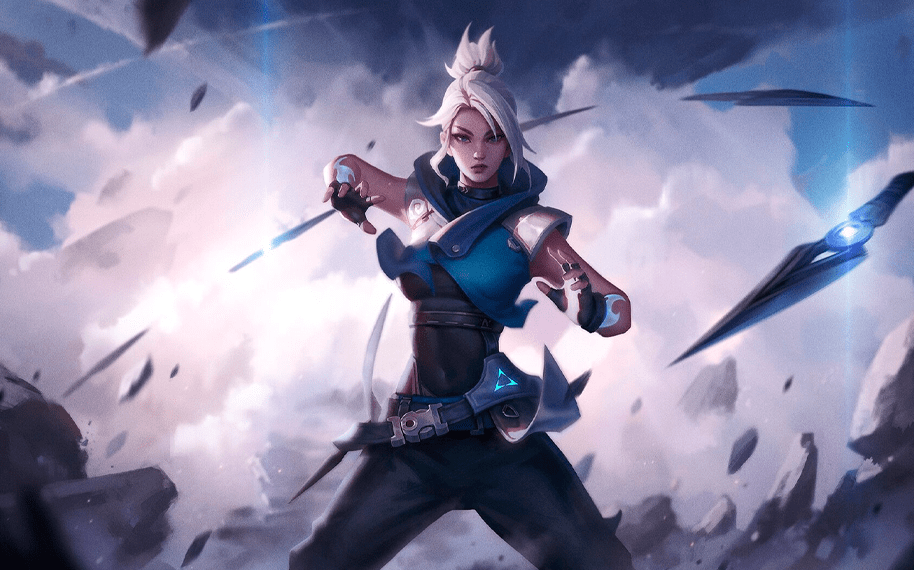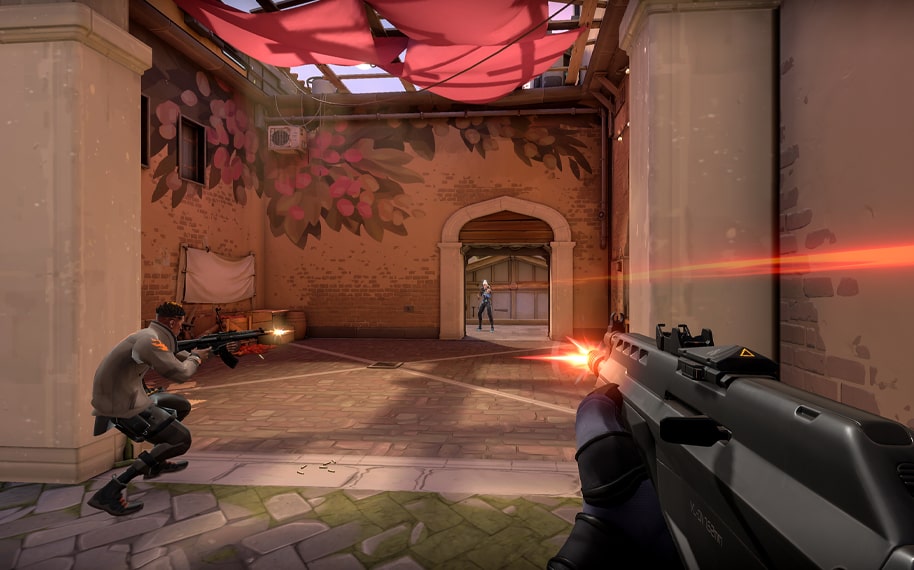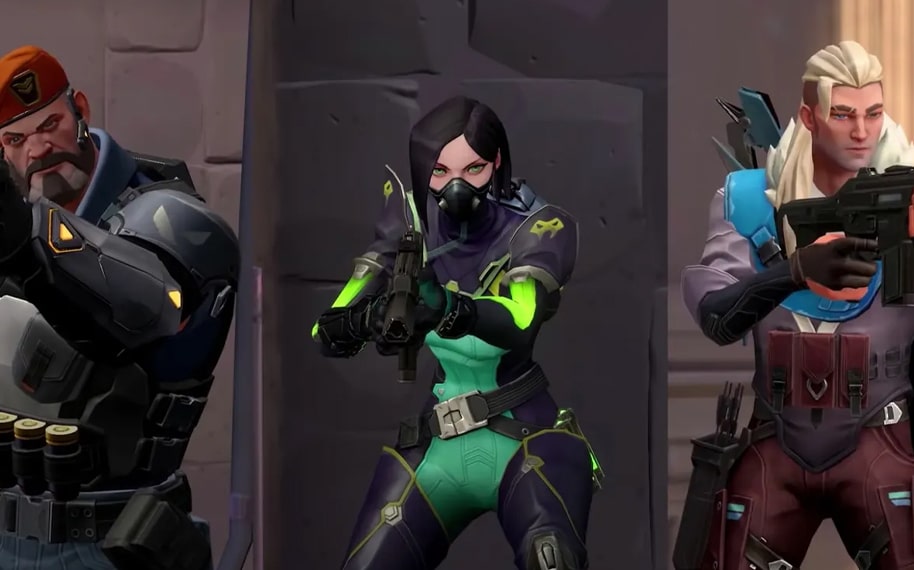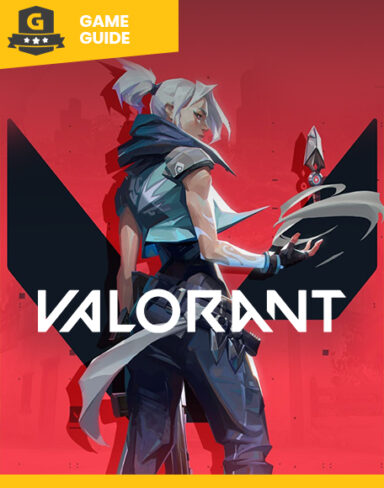Introduction
Valorant is a free-to-play First-Person Shooter (FPS) game which lets players control a selection of hero characters called Agents, to compete against others in multiple game modes set within the game. Considered a tactical-shooter game more akin to Counter-Strike than Call of Duty, the game is developed and published by renowned video game studio, Riot Games.
Officially released on 2nd June 2020, the game has received plenty of positive reviews from both critics and fans alike, prompting it to become a potentially huge Esports game come the foreseeable future. Although there are currently five (5) different game modes for you to test your competitive shooting skills in, the bread-and-butter of the game is still the bomb-planting sequence as seen in Counter-Strike games, where two (2) teams of five (5) players each take turns to attack or defend bomb sites against each other, with the winning team being the first to win thirteen (13) rounds of a match. However, what’s new to the proven formula is the introduction of Agent abilities; each Agent possessing unique skills and power-ups relevant to their distinct playstyles and in-game roles.
If you find yourself longing for a different shooter experience, Valorant should definitely be up there amongst your list of favourite new suitors!
Requirements
Although the game was launched in 2020, the PC specs required for you to play the game properly are pretty generous when compared to its close competitors. If you are wondering whether your computer will be able to run the game smoothly or not, here are the official PC requirements revealed by Riot Games:
| Minimum Requirements | Recommended Requirements |
| OS: Windows 7 or higher (64-bit)
Processor: Intel Core 2 Duo E8400 (or equivalent) Memory: 4GB RAM GPU: Intel HD 4000 DirectX: Version 11 Storage: 100GB of available space |
OS: Windows 7 or higher (64-bit)
Processor: Intel i3-4150 (or equivalent) Memory: 8GB RAM GPU: NVIDIA GeForce GT 730 DirectX: Version 11 Storage: 120GB of available space |
These technical aspects are very reasonable, especially in terms of the GPU and RAM requirements, unlike most other AAA games that can be found in the market today. Now that we’ve established the base specs, let’s jump right into the action!
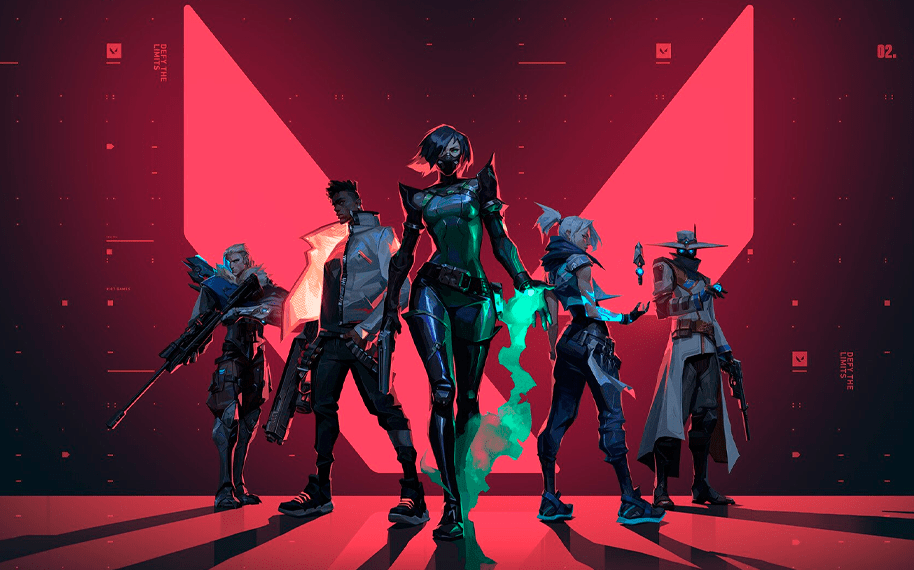
Special Agents
In Valorant, Agents are the hero characters recruited into the Valorant Protocol to keep Radiants (people with powers) in check, after the events of First Light (game lore). Each Agent is gifted with unique abilities which can be bought via in-game Credits during each round of a match, with distinct Signature Abilities and Ultimate abilities among them. There are also Agent Contracts to be completed, each with their own specific challenges to satisfy in order to unlock special Agent rewards.
To date, there are currently around sixteen (16) different Agents whom you are able to play as in the game. Agents have their specific roles to play on the battlefield, which are categorized into four different aspects:
Duelist: The damage-dealers of the team, Duelists excel in catching the enemy team off-guard through use of deadly combinations of in-game abilities and precision gunplay.
Initiator: When locked in combat, Initiators are the ones who lead the charge against stationary teams covering behind well set-up defences, exploiting gaps to allow your team to push in.
Sentinel: The guardians of the team, Sentinels are Agents who prioritize defensive manoeuvres and tactics to safeguard their allies, utilizing various abilities during a match.
Controller: The jack-of-all-trades, Controllers assume command of the battlefield by understanding the ebb and flow of combat before dictating the best choice of actions through their use of powerful in-game abilities.
An intricately balanced team will comprise of all four Agent roles to cater for any combat situation, ensuring the maximum success of a round if executed properly. However, nothing beats experience and skill, which can only be acquired by playing each Agent to identify their personal strengths and weaknesses in the game. Stop hesitating, and pick up those guns, Cadet!
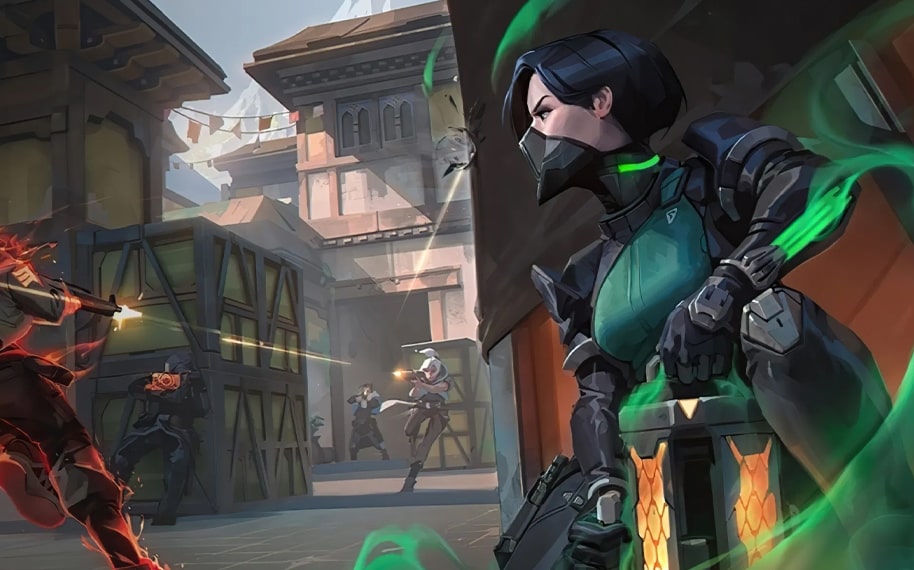
Unique Game Modes
Valorant’s primary game type is Spike mode which is essentially a Bomb Plant/ Defuse game mode similarly played in Counter-Strike; your team is chosen to play as either the attacking team which is tasked to plant a bomb at a specific location, or the defending squad which aims to thwart this. However, there are also other game modes which are available for you to play in, diversifying the overall FPS experience. Here are the game modes currently available in Valorant:
Unrated
If you are looking to enjoy some casual, non-competitive sessions of tactical shooting, an Unrated match is what you’re looking for. Practicing the same Bomb Plant/ Defuse mechanic, Unrated matches will not be calculated into your Ranked Rating (RR), letting you get a feel of the true experience before jumping into the real gritty stuff. In Unrated, a match ends in a Best-of-25 format, meaning that the first team to reach 13 points (1 point per round won) comes out on top. If both teams are tied at 12 points each, then a Sudden Death round is played to determine the decisive winner. The two teams squaring up to each other during Unrated matches are:
The attacking team: One player will be tasked to plant the Spike (bomb) while the others will cover him/ take his place in case of death.
The defending team: The defenders are tasked to stop the attacking team from successfully detonating the Spike, either by defusing the Spike once planted or killing every single member of the attacking team.
Teams will switch sides after the first twelve (12) rounds, ensuring that both teams get to play fairly on each side of the map.
Competitive
This is where your shooting skills are tested in Valorant; Competitive games are the ranked equivalent of Unrated matches, with each win awarding you with Ranked Rating (RR) points respectively. In order to unlock Competitive mode, you will need to win ten (10) Unrated matches first to ensure you are ready for the increased challenge. In Competitive mode, your in-game prowess will be tied to different ranked tiers which consist of:
Iron (III to I)
Bronze (III to I)
Silver (III to I)
Gold (III to I)
Platinum (III to I)
Diamond (III to I)
Immortal
Radiant
As mentioned earlier, the common Competitive mode that you will be playing in is Spike mode, but the difference between Competitive and Unrated is that there will be Overtime which replaces Sudden Death in Unrated, meaning that you will need to win by 2 successive points (instead of 1 point in Sudden Death) after tying 12-12. There are also two (2) other game types available under Competitive mode, each of them explained below:
Replication: In Replication, each team will play as the same Agent (example: five Skyes vs five Cyphers). Players on each team votes for an Agent to play as, while the game randomly chooses one from the desired picks. Replication is played in a Best-of-9 format, with the first team to reach 5 points wins. All other rules are the same as a normal Competitive match (including Overtime).
Spike Rush: A streamlined variant of Spike mode (Bomb Plant/ Defuse), Spike Rush is a Best-of-7 game mode which is watered down significantly to provide quicker match-ups, albeit other certain mechanics being upgraded to compensate for the changes. The first team to reach 4 points is considered the winner, with teams switching sides after the 3rd Weapon loadouts are the same for every player on the map (all teams), and each round randomizes the weapon loadouts respectively. Orbs are also scattered throughout the map, giving you buffs which range from insta-kill guns to out-of-combat health regeneration. Player abilities are also available during the start of each round. For the attacking team, every player receives a Spike, allowing anyone to plant the bomb at the target location (only one Spike allowed to be planted at any given time).
Deathmatch
You can also play Valorant as a common shoot-‘em-up like any other shooter out there, in Deathmatch. In Deathmatch, you play against thirteen (13) other players (total of fourteen (14) concurrent players) in a map, spawning randomly each time you are killed. You win by reaching 40 kills first, or ranking top on the leaderboard once the game ends after 9 minutes. You are able to buy Guns in-between rounds, but abilities are removed in Deathmatch to emphasize more on player skills instead of unique power-ups. Each player killed drops a small health orb for you to replenish a bit of Health, but the key here is to constantly keep moving while getting in as much headshots as you can, allowing you to improve better before jumping into Competitive.
There is also another type of Deathmatch in Valorant, which is Escalation. The Team Deathmatch version of the normal Deathmatch mode, Escalation groups you into a team of five (5) players fighting against another team on a map. To win, your team needs to accumulate kills which are tracked on a bar/ meter located on top of your screen. Your team reaches different segments of the meter after achieving a number of kills, cycling through different weapon loadouts each time. Your team wins by completing all segments of the meter first, or is ahead of the opponent team after 10 minutes.
Practice
If you are very new to Valorant, Practice mode allows you to familiarize yourself with the game’s basic mechanics first, before attempting to challenge others online. Practice mode is really straightforward, and there are currently three (3) Practice sessions for you to try out:
Shooting Test: You will be provided with various shooting challenges to improve your aim and gunplay.
Spike Planting: Introduction to planting Spikes on a map, you will learn the basics of how to properly play the game as the attacking team.
Spike Defuse: You learn about the fundamentals of protecting different bomb sites as the defending team, besides defusing planted Spikes.
Each game mode serves a very specific purpose for you to play in Valorant, with different in-game mechanics and gameplays to suit any kind of gamer out there. If you’re finally bored of the same Battlefield experience, why not try out Valorant for a change?
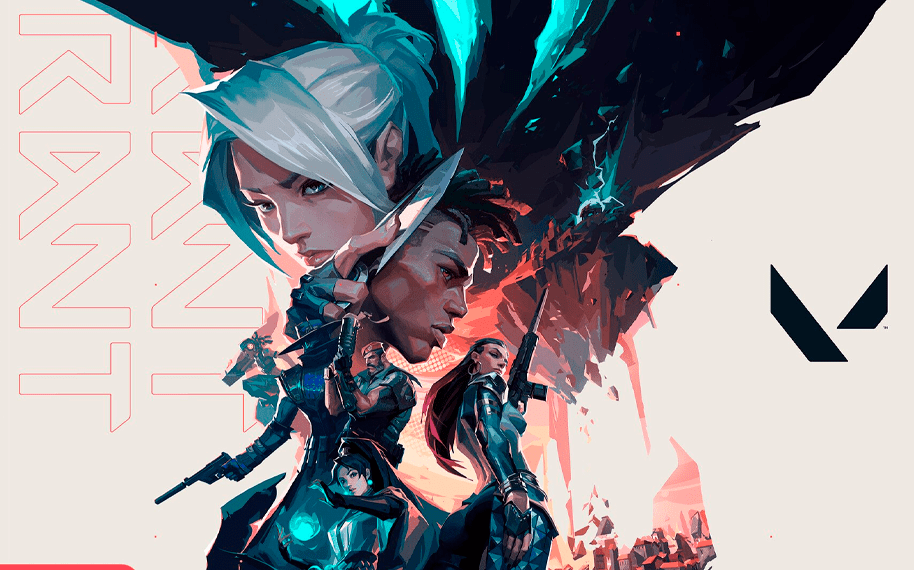
Weapons of Mass Destruction
In Valorant, there are currently seventeen (17) different kinds of weapons at your disposal, excluding the classical Tactical Knife for melee. Each weapon has its own distinct characteristics which correlate to their purpose and usage, spanning from cheap Credit costs to higher bullet penetration. In summary, there are six (6) different weapon categories for you to choose from:
Sidearm: Your trusty companion during emergency situations, your Sidearm comes in handy whenever your primary weapon runs out of bullets during intense firefights. Reloading your primary weapon’s magazine takes a few seconds to complete, which can mean life or death in tactical shooters like Valorant. Sidearms do a respectable amount of damage in medium-range encounters, but you will need to be accurate with your shots to score that important headshot. Right now, Sidearms are split into five (5) different variants which are:
Classic
Shorty
Frenzy
Ghost
Sheriff
As the common FPS mantra goes, “Switching to your sidearm is faster than reloading.”
Sub-Machine Gun (SMG): The cheaper cousin of its distant relative, the Assault Rifles, and its much bigger brother, Heavy Machine Guns, SMGs are basically upgraded versions of Sidearms. SMGs provide the same running speed for your character similarly to Sidearms, meaning that you will not be encumbered too much by opting for SMGs instead of other primary weapon types (Shotguns, Assault Rifles, etc.). SMGs are very good for close-to-medium combat, with their exceptionally high rate of fire ensuring consistent massive damage via their quick bursts of bullets. Still, they do not possess very high bullet penetration, making it slightly harder to attack enemies behind cover. In Valorant, there are only two (2) Guns under the SMG category:
Stinger
Spectre
Heavy Machine Gun: The mightier version of both SMGs and Assault Rifles, Heavy Machine Guns are destructive in nature and inflict massive damages by their tremendous bullet sprays, supplemented by their huge magazine counts. Heavy Machine Guns are very dangerous to enemies behind cover too, as they possess high bullet penetration power. The downsides to their use are that they are bulky to move around with, takes FOREVER to reload, and are not too accurate due to their strong firing recoil. The current Heavy Machine Guns are:
Ares
Odin
Assault Rifle: The best overall Gun type in the game, Assault Rifles maintain a delicate balance between weapon damage, gun recoil, magazine count, penetration values and firing distance. Stray headshots are extremely devastating using Assault Rifles too, with their headshot damage considered second highest only to Sniper Rifles in Valorant. If you enjoy medium-long range combat engagements, Assault Rifles are definitely the best choice amongst the rest. There are four (4) different Assault Rifles for you to choose from:
Bulldog
Guardian
Phantom
Vandal
Sniper Rifle: Consider yourself a keen-eyed marksman? Sniper Rifles are the most damaging weapon type in the game, with the best Sniper Rifle capable of eliminating an enemy in one-shot. Quick aim reflexes are needed to master the Sniper, with only the best players capable of using Sniper Riles to their best potential. In compensation for their supreme weapon damage, Sniper Rifles suffer from slow firing rates, reduced movement speed and minimal magazine counts. If you’re more comfortable sniping players from afar, then you can decide between two (2) Sniper choices in the game:
Marshal
Operator
Shotgun: Close-Quarters Combat (CQC) is the best description for Shotguns in Valorant. Shotguns are lethal in close-range scenarios due to their impressive spread damage, which helps to alleviate their low weapon accuracy and big recoil. However, they are very weak for long range firing, with small magazine counts and slow reload speeds too. Consider using the Shotgun during very specific scenarios only, unless you’re already a Valorant pro gamer though. The two (2) types of Shotguns available in the game are:
Bucky
Judge
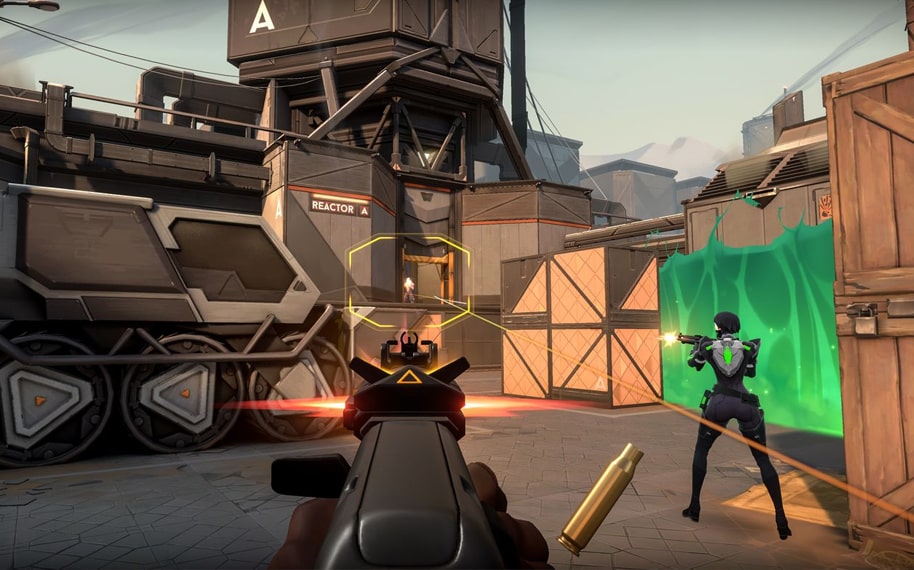
Credits, Everywhere!
As explained previously, you will be able to purchase guns and abilities during intermittent phases between rounds of a match. These special in-game periods of buying items and weapons using credits (acquired by killing enemies, accomplishing objectives, etc.) are called the Buying Phase, allowing you to safely consider your next gun before the start of a new round.
Credits, also called Creds in short, are your only way of obtaining better guns and upgrading your Agent’s in-game abilities (except for Ultimate Abilities), making Credit management that much more vital too. However, as Valorant is considered a team tactical shooter, teammates are able to ‘donate’ certain guns if you are low on Creds during certain situations. Individual prowess means little if the team continues to fall behind, so each member will need to coordinate and work together in order to succeed, even in terms of Creds management. In certain circumstances, a team may even opt to save Creds for a particular round too, buying minimal gear and equipment to try and win the round economically, which will substantially provide much larger Cred accumulation for the next rounds. However, players can only own up to a maximum of 9,000 Creds under normal circumstances, so keep this in mind. Summarily, you gain Creds through a few different ways, but the main ones can be considered as:
Winning a round: 3,000 Creds
Losing a round: 1,900 Creds
Enemy kill: 200 Creds
Staying alive after a round: 1,000 Creds
Your survival means a lot in Valorant, so don’t get yourself killed easily if you are to ensure maximum chances of success for your team as a whole. You wouldn’t want to be called a burden for frequently asking teammates to donate guns now, do you?
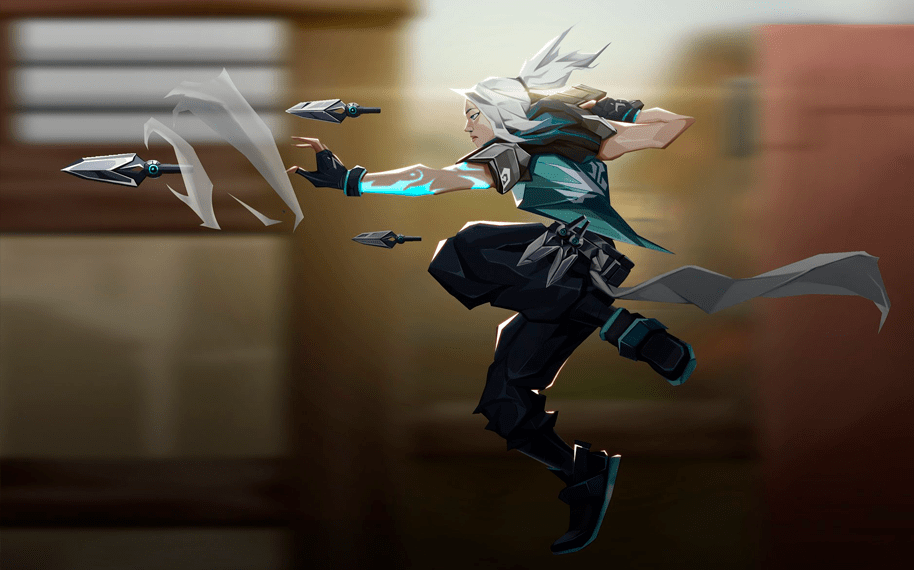
Tips And Tricks Up Your Sleeve
Although the basics of Valorant can seem pretty simple to understand, it may not be as convenient when it comes to the execution. Top Valorant players earn their immense reputations by consistently getting good at the game, besides those that have transitioned from other competitive FPS games such as Counter-Strike, Tom Clancy’s Rainbow Six Siege, and even Sudden Attack. If you are looking to upgrade yourself from Iron tier to Gold in a matter of days, then these important tips could certainly help you out enormously:
Tune your in-game settings
A good habit when you first start playing ANY FPS game is to experiment with the in-game settings first. Valorant is a very competitive shooter in all fairness, and you will encounter other players who are exceptionally skilled that they can sometimes be mistaken for using aimbots!
Still, the most common habit that even pro players do when they boot up a new game is to explore the mouse sensitivity first and foremost. Every player has their own preferred mouse sensitivity options which cater to their personal playing styles, so you should definitely dial down (or up!) the mouse sensitivity if you find your Agent lumbering around while turning 180-degrees to the right. Other settings which should be considered are graphical tweaks (to boost framerates) and mini-map settings too (larger mini-maps provide better overall map awareness), so explore those in-game menus to see which settings fit your gears perfectly.
Knife your way around
Another common exploit in tactical shooters is to equip the knife while moving around the map. This common trick is also viable in Valorant too, with which you can quickly reach a certain point on the map by changing to the knife first, before switching back to your primary gun afterwards. The Tactical Knife is the lightest weapon in the game (the only melee weapon available), and thus your movement speed is slightly improved by holding it too. If you spot an enemy though, you can immediately cycle to your primary weapon and fire on the enemy promptly after that, but it is advisable to always switch to the knife sparingly during running, so that you will at least have your guns drawn before reaching your target location.
Remember, controlled shots!
A good rule of thumb while playing Valorant is to always shoot in short bursts instead of spraying bullets around your target (by holding down the firing button). Not only will you save your ammo, but you will also be much more accurate with your shots too, as you maintain recoil control of your gun. This plays down to emotional control and experience though, but once you manage to get it right, your Kill/ Death (K/D) ratio will significantly improve in no time!
Maintain the cursor around ‘head’ level
Keeping your mouse cursor consistently at an enemy player’s perceived head level at all times requires impressive skill and control, but it is definitely not impossible.In fact, pros are already subconsciously doing this every day, their years of persistent practice and experience kicking in. Start by playing Practice to get the hang of keeping the mouse at the expected player head levels, and continue to progress further through other game modes from then on. It will take some time for you to master the skill, but once you do, it sticks with you all the way.
Prepare your abilities behind cover
Remember, abilities take some crucial few seconds to ‘wind up’! Abilities can definitely change the tide of battle, but cycling them out in the open during a tough gunfight can also get you killed, leaving a lot to be desired unless you have just stayed behind cover before getting those powers out. You can even use the time that your teammates are engaging the enemy to prepare a solid trap or two, like Viper’s lethal Snake Bite. In Valorant, once you’ve gotten used to a few beneficial habits like this, you’ll definitely notice improvements to your playing style as you rank higher in Competitive mode.
Combination of guns + abilities
As established earlier, each Agent possesses different roles and exclusive abilities to counter the enemy team in any particular map. However, knowing which gun to use to combine effectively with your Agent’s abilities can also be tremendously beneficial too. Assault Rifles like Phantom and Vandal are undoubtedly favourites in Competitive, but if you’re a Breach main, you can probably kick people in the teeth by going in up-and-personal using the Judge (shotgun) which also works well with most of his impairment abilities (blinds, dazes, etc.). There is nothing wrong for having a favourite weapon in mind, but you can always try to mix things up by learning which guns supplement your Agent’s abilities more than others.
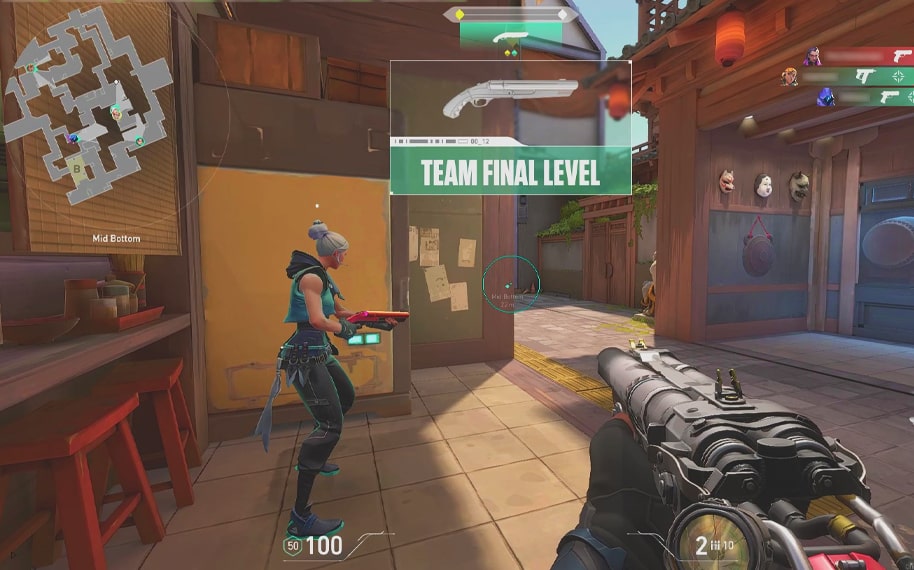
Armour is the best medicine
A lot of low-level players may have missed out on this one, but you can absolutely increase your survivability by buying Shields during the Buying Phase too. There are two (2) different Shields which provide 66% damage reduction, being:
Light Shields (absorbs a total of 25 damage)
Heavy Shields (absorbs a total of 50 damage)
Although Shields can be quite expensive in the game (400 Creds and 1,000 Creds each), you can always recoup those Creds easily by playing to your strengths in each round, helping your team win by all means necessary. Remember, staying alive at the end of any round (win or lose) rewards you with 1,000 Creds too! Speaking of which…
Steal those Guns on the floor!
You can always pick up Guns thrown away on the floor, which is either done by player choice (teammate or enemy throwing their weapon for a better one) or when enemies die on the battlefield (leaving their primary weapons behind). If you’re low on Creds and would wish to buy Shields, then don’t shy away from looting other players’ Guns scattered on the ground. Chances are, you might just get a sweet Sniper Rifle like the Operator for free! Not only will you save those hard-earned Creds, you can even bring that weapon straight into the next round if you survive the previous one. Neat, eh? Well, better keep your head in the game if want to consistently stay alive throughout each round.
Do not be stingy with your abilities – especially Ultimates!
Valorant is a fast-paced game, which leaves no room for you to spare those awesome Agent abilities if you have them available, especially when your team is striving for the win. Unlike Creds, your abilities count directly to the round win, either by killing enemies outright or providing support to let your teammates finish them off. That is why it is advisable to use your powers as much as possible, but utilizing them strategically at the same time too. For instance, Skye’s Regrowth ability is crucial to heal teammates during emergencies, improving your team’s odds of winning in a 3v5 (two teammates killed against a full enemy squad) scenario.
Don’t withhold your Ultimate Ability too long once you’ve managed to unlock it too! Every help matters in Valorant, and your Agent’s Ult may be decisive at the end of the day, especially when everyone’s Ults is wiped clean after your team switches sides during a match. Use it when you have the chance, or you’re going to regret it later.
Intel is everything
When you only live once throughout each round, every decisions and actions matter. That’s why intel and information about the enemy team’s whereabouts and equipment is highly valuable and important. Knowing exactly where the enemy team is located or how they are spread out can provide crucial insights for you to plan out flanking manoeuvres while also setting up team ambushes too. Certain Agent abilities which track enemy movement can also help you defensively as well, letting you bypass the oppositions’ own ambushes and traps at the same time. As an infamous line once dominated the media before, “Knowing is half the battle”.
Hear that?
You should know this by now, but your Agent creates sounds by simply running around the map. This may seem irrelevant, but it is actually an undisputed game mechanic which has been prevalent in all other tactical shooters out there: sound betrays your location to the enemy! This works the other way around too, where you can easily identify an approaching enemy by hearing footsteps coming from behind the corner. If you are still unaware of this, or have yet to rank above Iron in Valorant, then there are two ways of moving around your locale:
Normal run: You run around the map normally, but your footsteps create sound which may alert your enemies (can be seen as a radial ping around your Agent icon on the mini-map).
Silent walk: Pressing ‘Shift’ (depending on your keyboard layout) prompts your character to walk silently instead, moving slowly but removes any potential sound coming from your footsteps.
You can choose to mix these two mechanics whenever you want, running towards your desired location before walking silently once closer to the rear of an enemy team, surprising them completely. Try it out for yourself, you’ll be amazed about how you didn’t know about this sooner!
Learn the maps
No map is the same in Valorant, except for the basic foundations of bomb sites and spawning locations. Understanding your terrain and landscapes can also play massively towards gaining the upper hand against opposition teams. Sometimes, there are certain alleyways and corridors which may seem long to go through, but provide alternate routes to flank your enemies. Entrenched enemy teams can also be exploited if you know your way around maps too, which is definitely important during certain circumstances in normal Spike mode. If you’ve never taken the time to explore your surroundings, then this may change your mind.
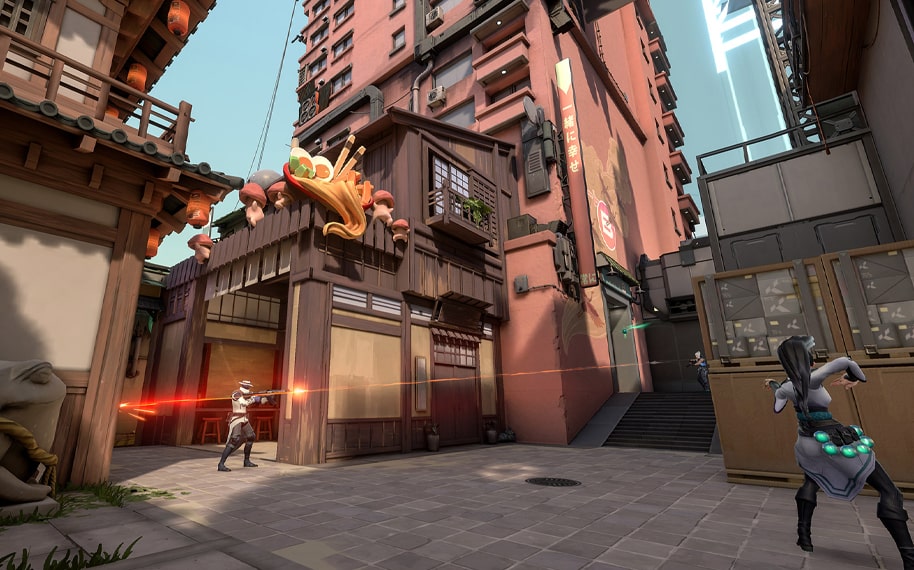
Shooting through walls
Guns can shoot behind certain thin walls, and each Gun also shows this in their item description during the Buying Phase (Wall Penetration). If you know the ins-and-outs of your weapon, shooting enemies who are covering behind specific obstacles becomes no challenge at all! This is especially true if you are sniping from afar using the Operator, casually one-shotting players behind boxes and doors. Gun choice is crucial here, so learn to identify your weapons as soon as possible for you to obliterate those cowering online players especially in low ranks!
Plant those Spikes!
In Spike mode, if you are on the attacking team, you can definitely win rounds by eliminating all the defenders before even planting the Spike itself. You can surely do this all the time, but you lose out on some truly important Creds too! This is because planting a Spike rewards all of your team with extra 300 Creds, which certainly helps towards buying an upgraded weapon afterwards. Not only that, your team will also be awarded with one point of Ultimate Ability as well, which emphasizes the importance of planting that Spike package at the end of every round. Put those bombs to good use!
Gauge the Spike timer
No matter which side you are playing for, knowing the specific timing of planting or defusing the Spike will prove to be very beneficial for both you and your teammates. As the defending team, you will be able to estimate the time required to defuse the bomb before the round ends. This can prove to be crucial if you are hesitant about going in for the defusal, with which understanding that it is already too late to stop the Spike from imminent explosion can help you save your own life for the next round, saving you extra Creds and those precious equipment as well. In summary, these are what you should note about the Spike’s timers:
Planting Spikes (attacking team): 4 seconds
Defusing Spikes (defending team): 7 seconds (defusal progress is saved at 3.5 seconds, in case you are interrupted)
Spike detonation countdown: 45 seconds
These timers are not shown in-game, so you should definitely estimate your timings properly before the round ends.
Formations and covering fire!
If you are coming from Call of Duty or Battlefield, this game is undoubtedly not the same as what you are used to! You need to keep this in mind, as running and gunning mindlessly throughout the map WILL get you killed (and lead to your team losing consistently). You can only do that in Deathmatch game types in the game, but those will not count towards any of your Matchmaking Rating (MMR) or Ranked Rating (RR) at all. In Valorant, team compositions and support become essential aspects of your team’s success. As the defending team in Spike mode, you will have two different bomb locations to protect, but only have five (5) players to do so. Eventually, your team will be split into two most of the time, but you will have limited support if engaging enemies later on. On the offensive, your team can also decide either to split up or group together, but the latter is much more beneficial in order to protect the Spike carrier all the way to the bomb location. This would mean two players attacking the front while another two covers the flanks, keeping the carrier protected in the middle.
This is just one example of a team setup which most players tend to forego, but if you’re in a team of like-minded players, coordinating your plays like this will surely keep you at an advantage even against some of the pros.
You only have one life
Your life matters in Valorant! If you die in any round, you fall behind not only in terms of match rounds but also lose out on valuable Creds and Guns too. As shared earlier, surviving a round awards you with 1,000 Creds, irrespective of the previous round’s result. That’s a lot of Creds for not doing anything at all! It’s not easy though, as your team objectives are still the main priority. However, if you are already too late to defuse the bomb, better to save yourself from going in Rambo when the Spike is about to explode either way.
Teamwork is life
If there is one advice that can be given to players about long-lasting life in Valorant, it is that your team is everything that you need to win and survive rounds. Playing YOLO gets you nowhere, although you may think you’re cool just by doing so. In reality, your constant deaths keep your team at a disadvantage all the time, even if you manage to grab some kills along the way. Unless it’s Deathmatch, your team win is much more important than getting those high kill counts on the match leaderboard. Tune your mentality accordingly, and you’ll find yourself reaching Radiant rank absolutely quickly. Just don’t forget to turn your mic on to communicate with your teammates all the time, okay?
